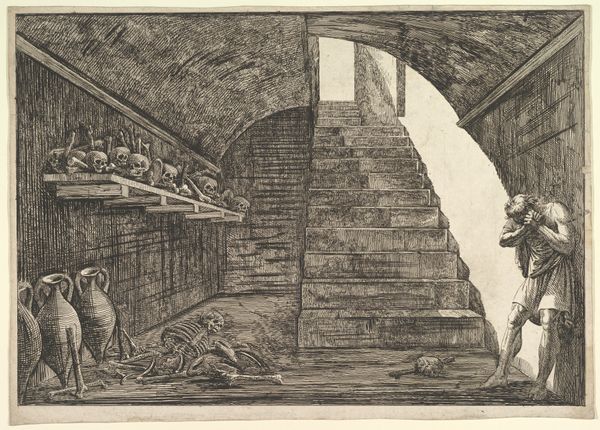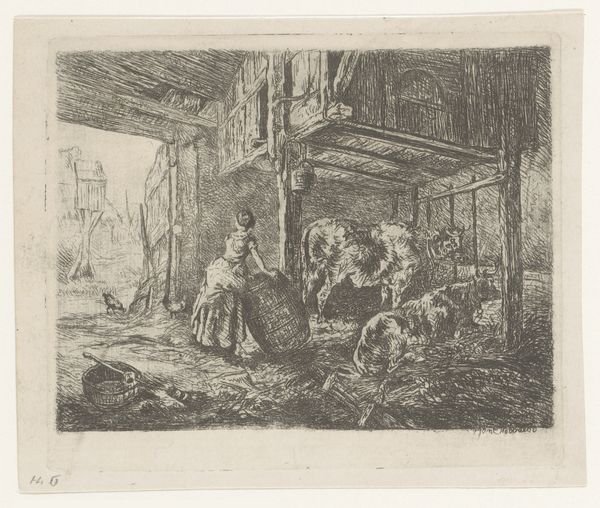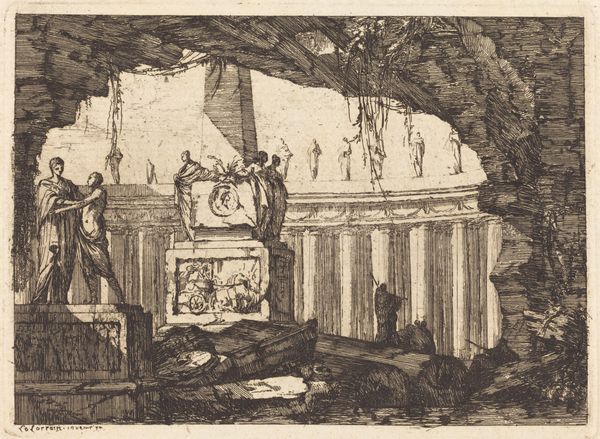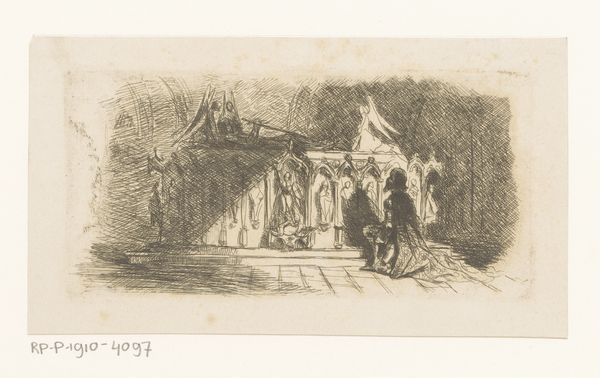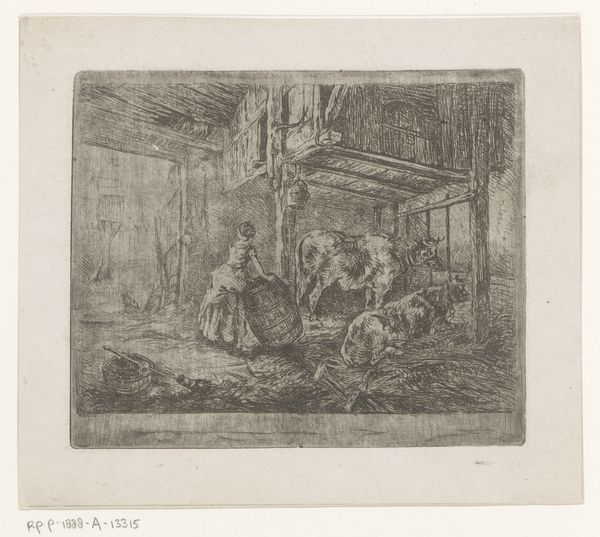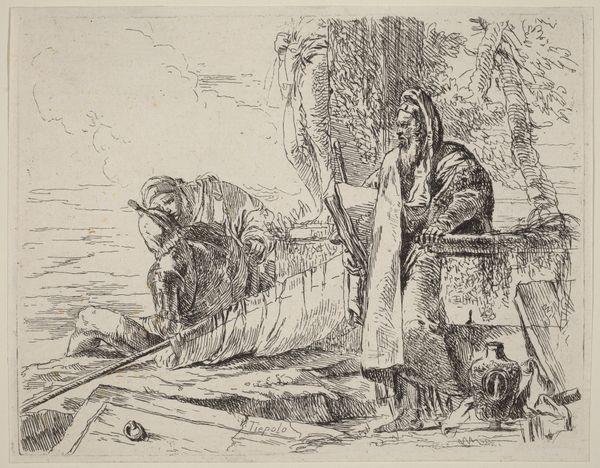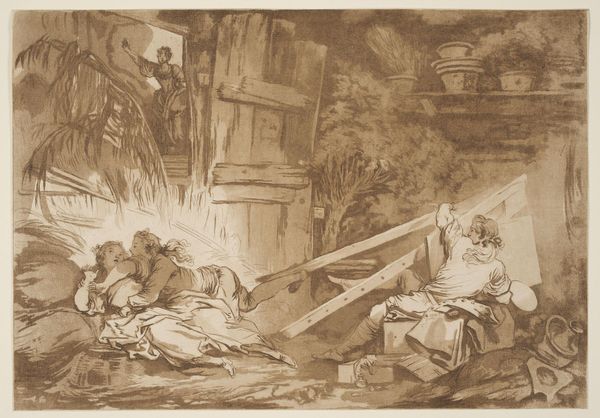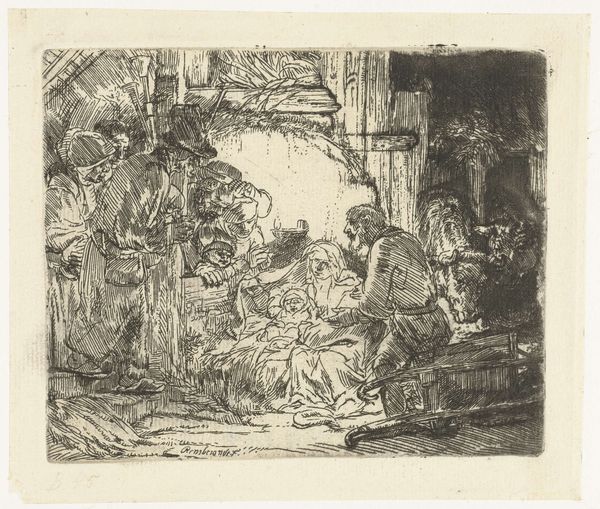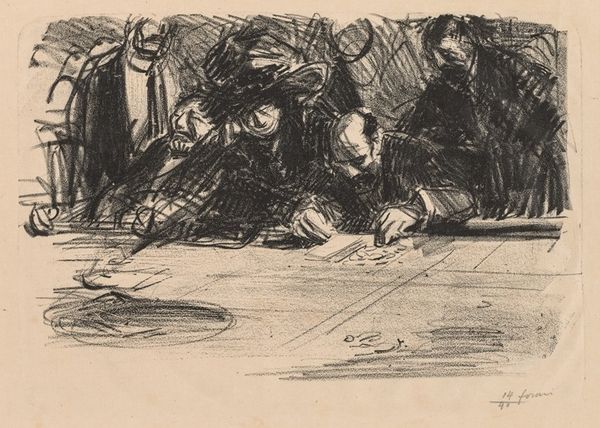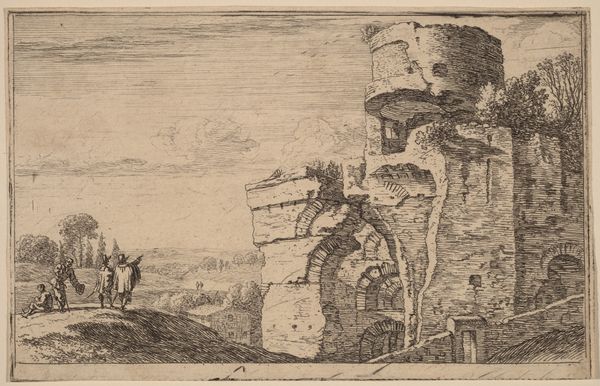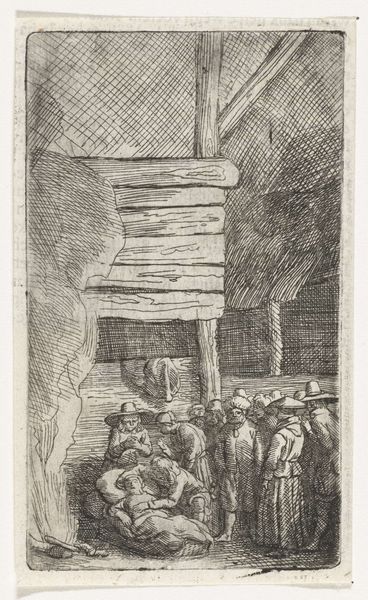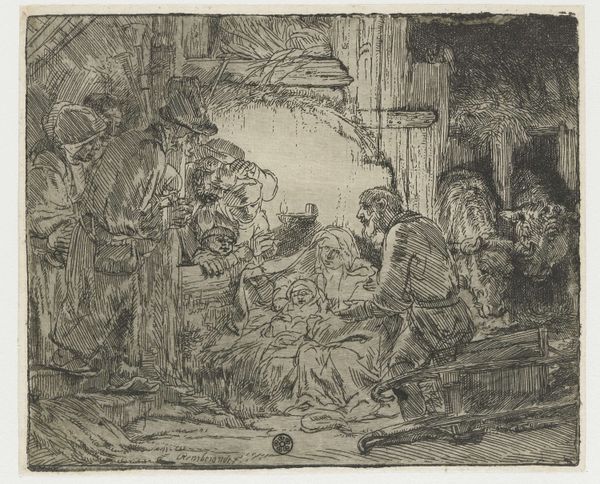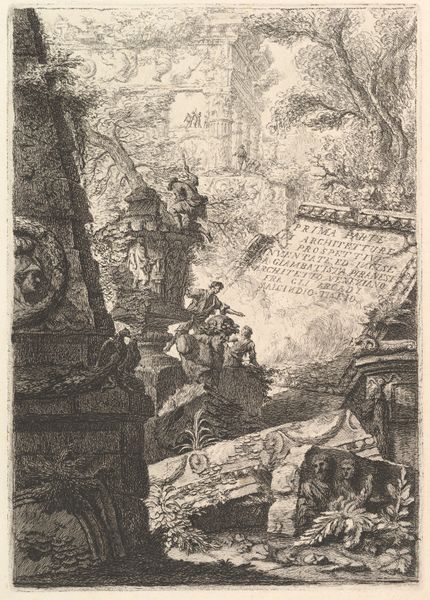
print, etching
# print
#
etching
#
landscape
#
cityscape
#
realism
Dimensions: plate: 85 x 161 mm sheet: 156 x 252 mm
Copyright: National Gallery of Art: CC0 1.0
Curator: This etching, dating from around 1914, is entitled "Smelters - Pittsburgh" and was created by Earl Horter. It's a gritty depiction of the steel industry. Editor: Whoa, it’s intense. A smoky, almost claustrophobic scene… the sheer density of lines creates a palpable atmosphere. It feels dangerous and incredibly busy. Curator: The print captures Pittsburgh at its industrial peak, reflecting both its economic power and the harsh realities of the labor force. Consider how the early 20th century witnessed rapid urbanization and heavy industry redefining urban landscapes, which became an increasing subject in the visual arts. Editor: The city feels less like a background and more like a breathing, if somewhat sickly, organism here. Those workers, they seem dwarfed by the industrial behemoth around them, almost consumed by the machinery and smoke. Curator: Exactly. And, of course, etchings became very popular around the turn of the century partly because the technology became so much more readily available to artists. Editor: It's got that same sort of raw energy as a Piranesi print. There is so much going on, your eyes have trouble settling. Curator: Interesting comparison. I’m drawn to Horter's choice to focus not on the heroic aspect of industry, but on its effect on human scale, human life. What purpose did this portrait of American cities serve during its time and later, considering, that by the turn of the century, America experienced mass urban transformation due to a growth of manufactory? Editor: The high-contrast black and white creates a powerful effect—emphasizing the bleakness of the scene. I see a certain dignity there, even in the harshness, a kind of testament to human endurance. Curator: Absolutely, the print does provide a record of social conditions during rapid industrial development in America. We should acknowledge the environmental and human costs of the rapid industrialisation. It's not simply a celebration. Editor: It gives me the chills in the best way, you know? Like staring at a complex wound... it’s beautiful and terrifying all at once. Curator: Horter gives us much to reflect upon in relation to the story of industrialisation. Editor: And for me, the sheer visual punch—a really powerful moment of witnessing.
Comments
No comments
Be the first to comment and join the conversation on the ultimate creative platform.
